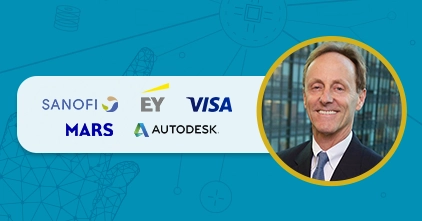
LMS and LXP offer different training and development functions. Learn their key characteristics and how they affect language learning.
Learning Management Systems (LMS) and Learning Experience Platforms (LXP) remain integral to digital training. The 2024 Training Industry Report found that 90% of companies in the US are using LMS for training, while a market research on LXP saw the platform demand increase with the growth of Artificial Intelligence (AI).
With the continued use of these platforms, it’s essential to understand their distinct roles and how they impact organizational learning strategies. This article will discuss the distinguishing features between LMS and LXP, how they benefit organizations, and how they factor in choosing a language learning provider for your learning program.
LMS and LXP: Which is Which?
The difference between LMS and LXP comes down to their function: LMS is an administrative tool for tracking learner activity, managing compliance, and record keeping. LXP, on the other hand, focuses on content curation and recommendation with learning materials from one or more providers.
Both systems offer content delivery but differ in their approach: LMS delivers standardized learning, where training managers determine the scope and order of lessons. LXP offers personalization, either powered by algorithms or AI, enabling learners to drive their learning.
Now the question comes down to: which of the two should you go for? A training needs analysis will help you determine learner proficiency levels, learning styles, and how they relate to your business objectives. Having these benchmarks will ensure that the selected platform aligns with your organizational goals and employee needs.
This is particularly relevant in language learning, where an LMS may benefit regulated, industry, or job-specific language lessons. At the same time, immersive and adaptive content from an LXP can aid with language practice.
Let’s examine how these systems can boost your language learning program:
The Value of LMS and LXP in Language Learning
Compliance and Personalization
An LMS provides structure to your program, which can be balanced by an LXP’s personalization features. This comprehensive learning approach allows organizations to meet diverse learning needs without compromising training requirements, especially in industries that call for technical knowledge.
Picture it this way: an LXP allows learners to learn at their own pace, but an LMS running alongside it guarantees they target their designated lessons. Both learning systems will optimize your L&D team’s workflow and let your learners take the lead in their language training.
Accessibility
As content delivery tools, LMS and LXP can make it easy for learners to access their lessons. Take Moody’s, for example. Integrating their language learning content into their LMS paved the way for one-stop access for all their learners.
Moody’s LMS integrations removed barriers such as multiple login credentials and device-specific usage, which encouraged learners to start lessons whenever convenient–the enhanced learning experience, supported by the right messaging, boosted learner interest and participation.
Reporting and Analysis
Targeting learner engagement can be reinforced by data-driven insights. An LMS makes monitoring learner performance and compliance easier for L&D teams. An LXP, on the other hand, gives training managers a deeper look into how a learner interacts with the learning content and how it affects their progress. These data points allow them to formulate strategies to drive engagement and see what works and what doesn’t.
With the appropriate mix of systematic oversight and adaptive learning experiences, organizations can improve their training strategies and ensure that their language training programs are impactful and aligned with business goals.

How LMS and LXP Factors in Choosing a Language Learning Provider
Determining the suitable learning platform depends on the benefits and specific features that would best advance your organization’s learning program. An LMS or LXP also plays a significant role in evaluating a language learning provider: collaborating with a provider that offers a wide range of integration capabilities facilitates smooth content delivery to your learners, and covers secure logins from anywhere and on any device.
By focusing on compatibility and user-friendliness, organizations can equip employees with practical language training that promotes personal and business development. You can transform your learning environments by choosing a language training provider that seamlessly integrates with your LMS and LXP and create a more connected, efficient, and engaging training experience.




